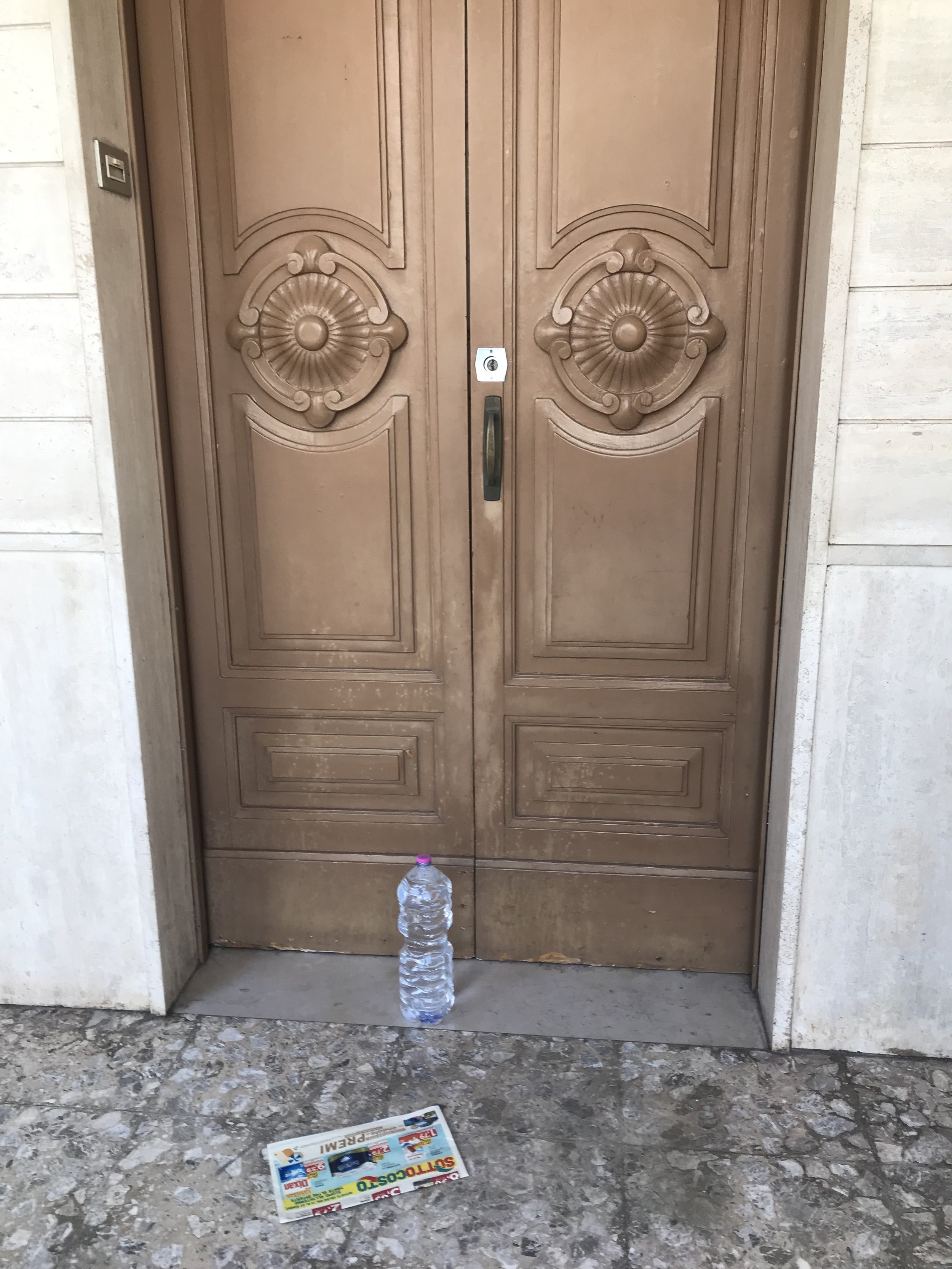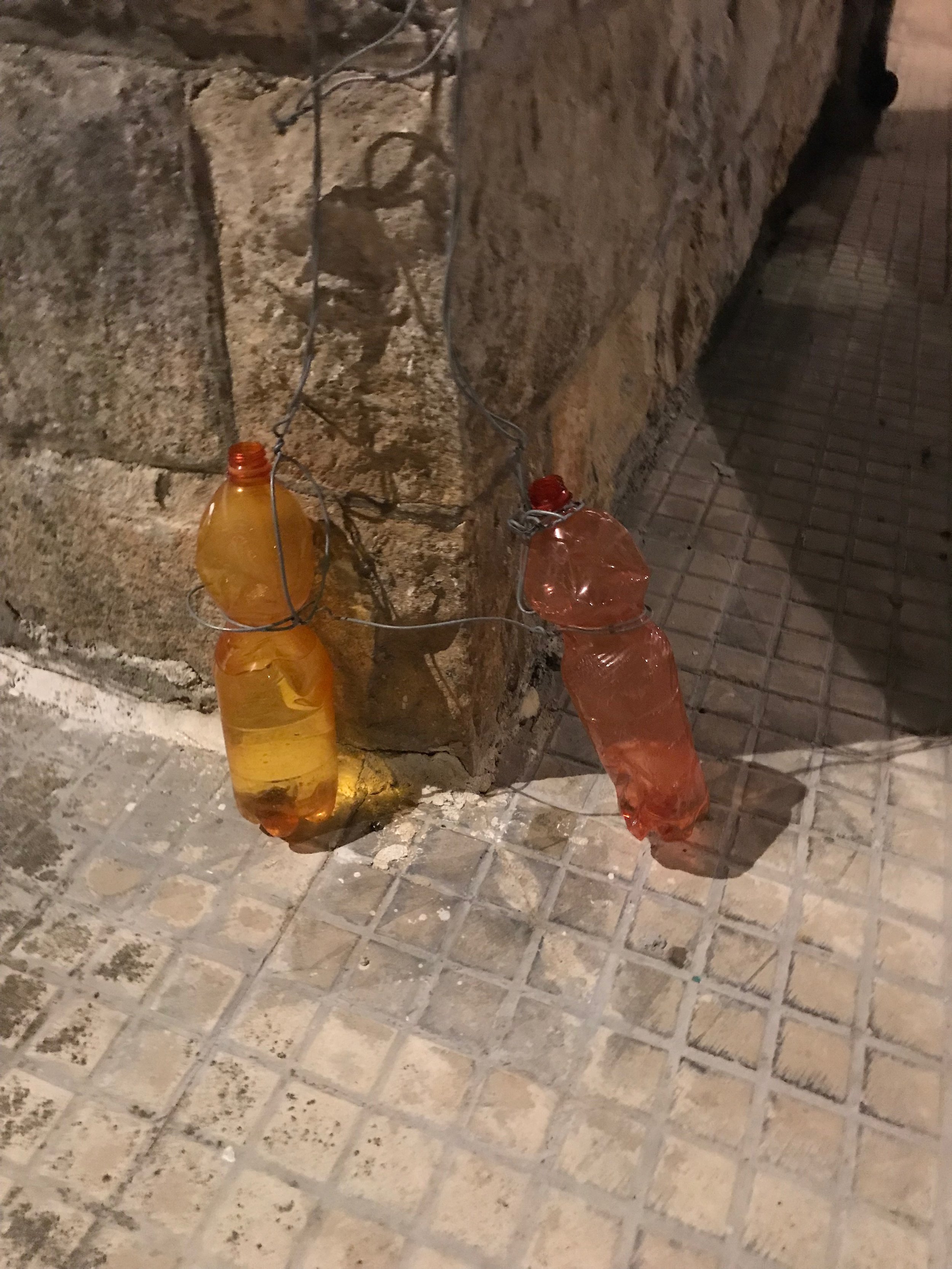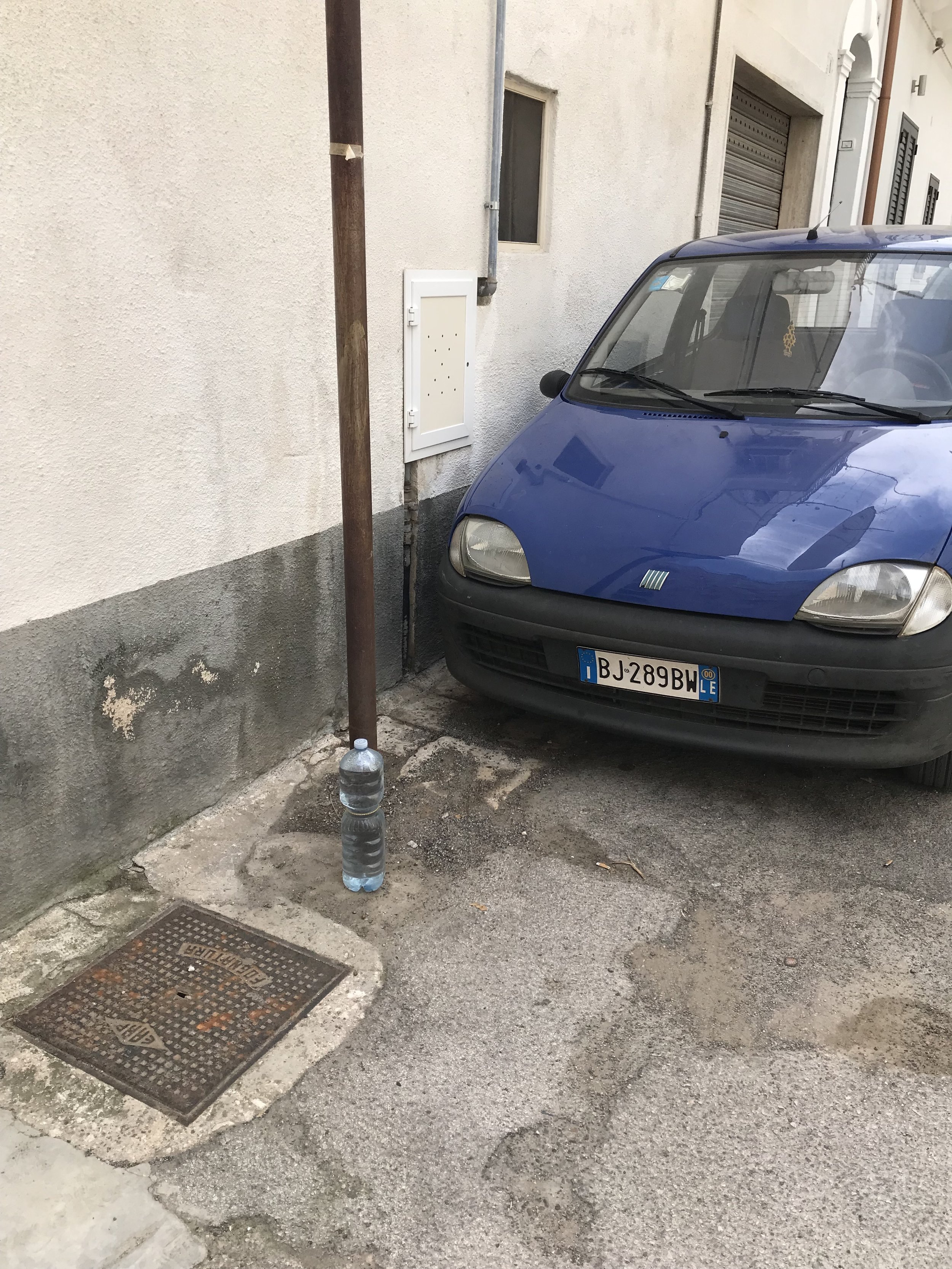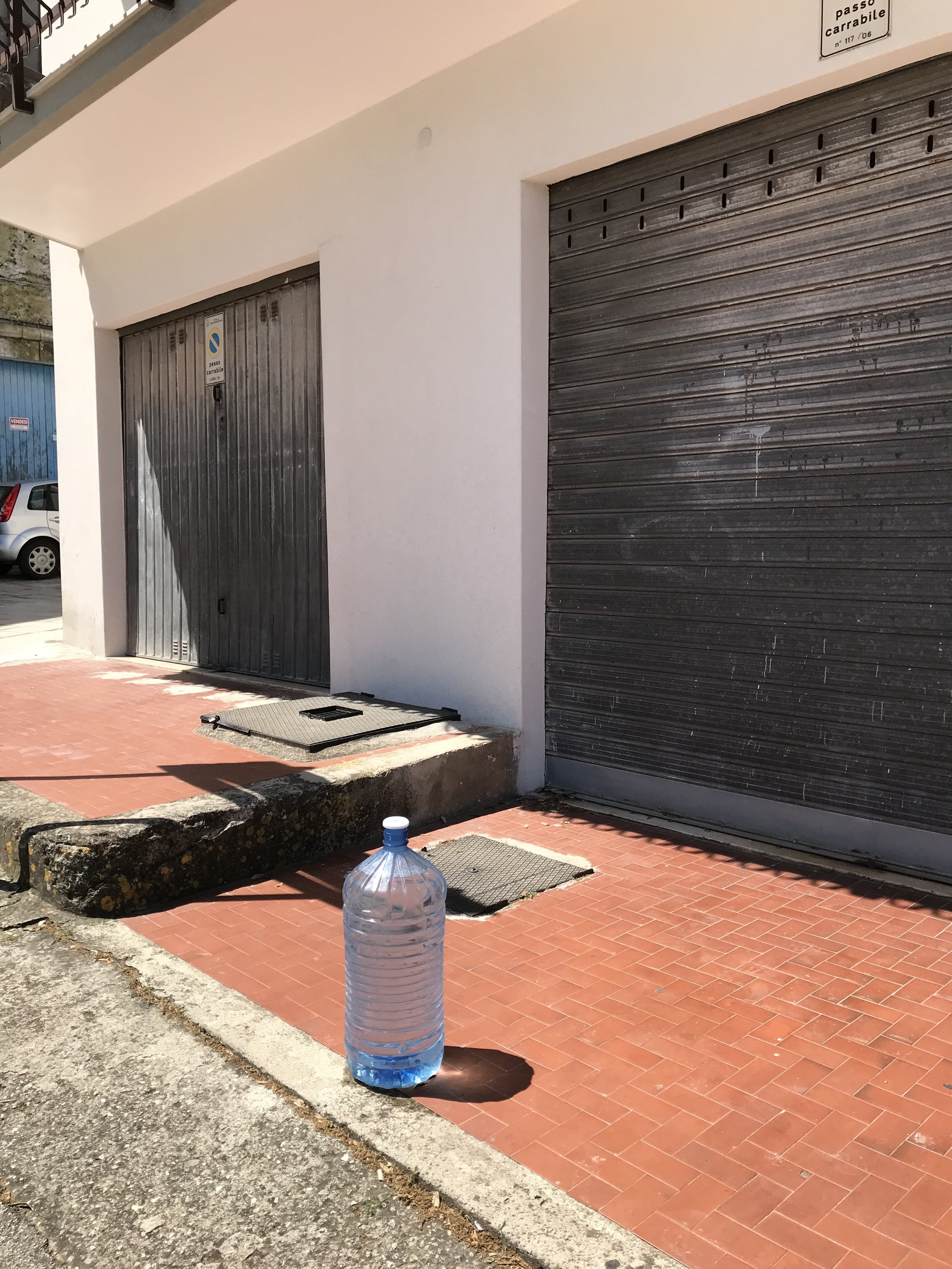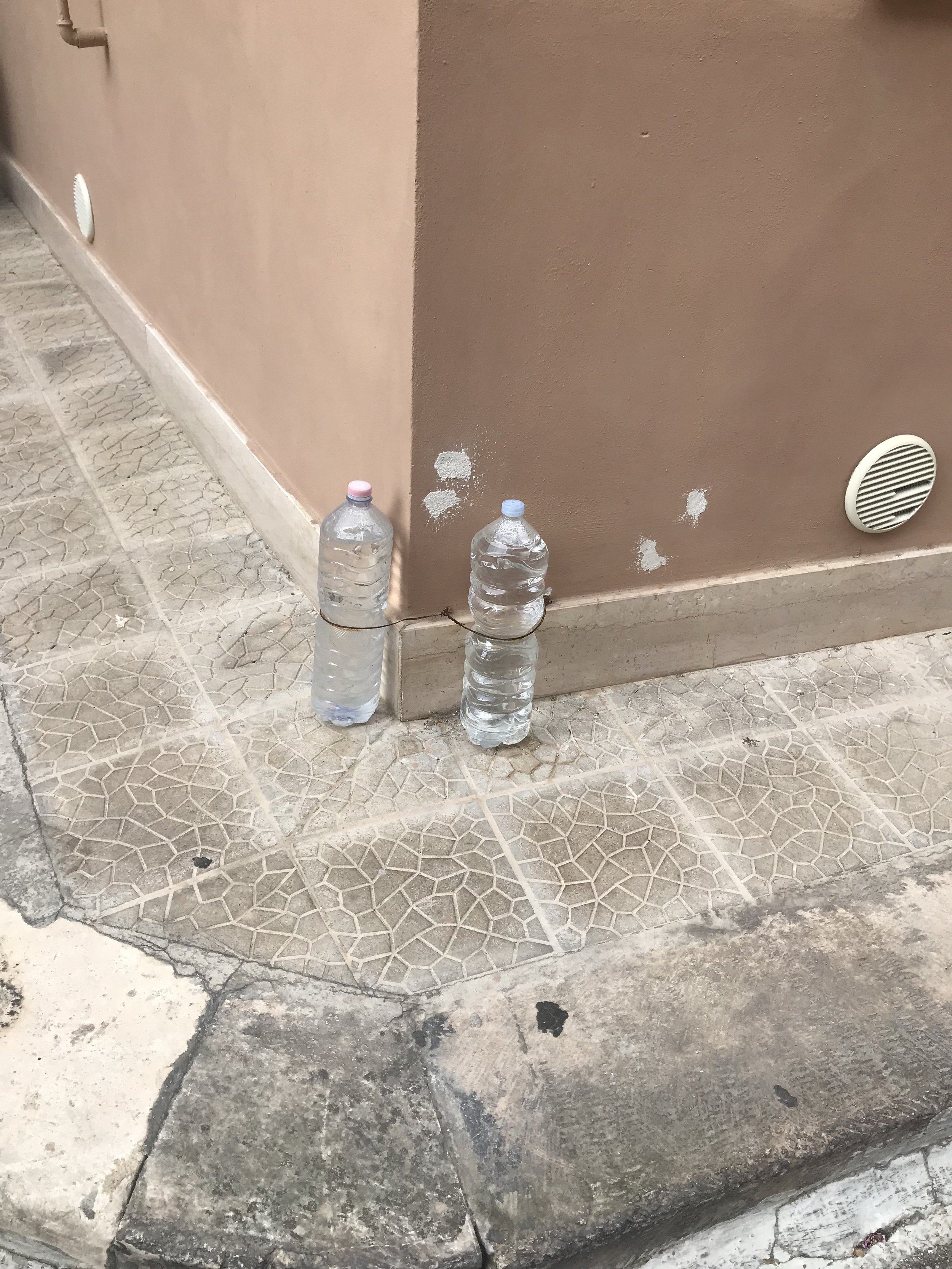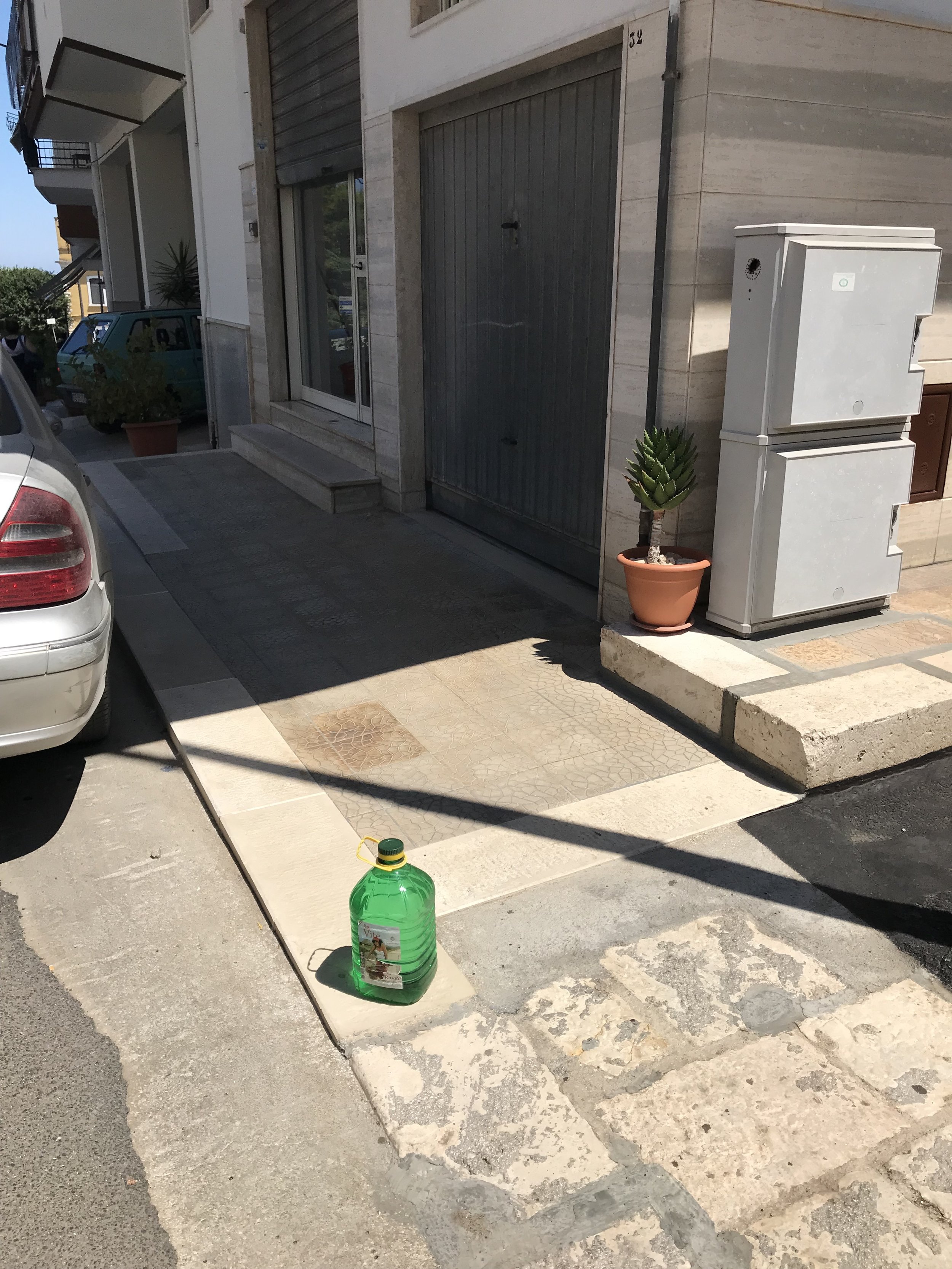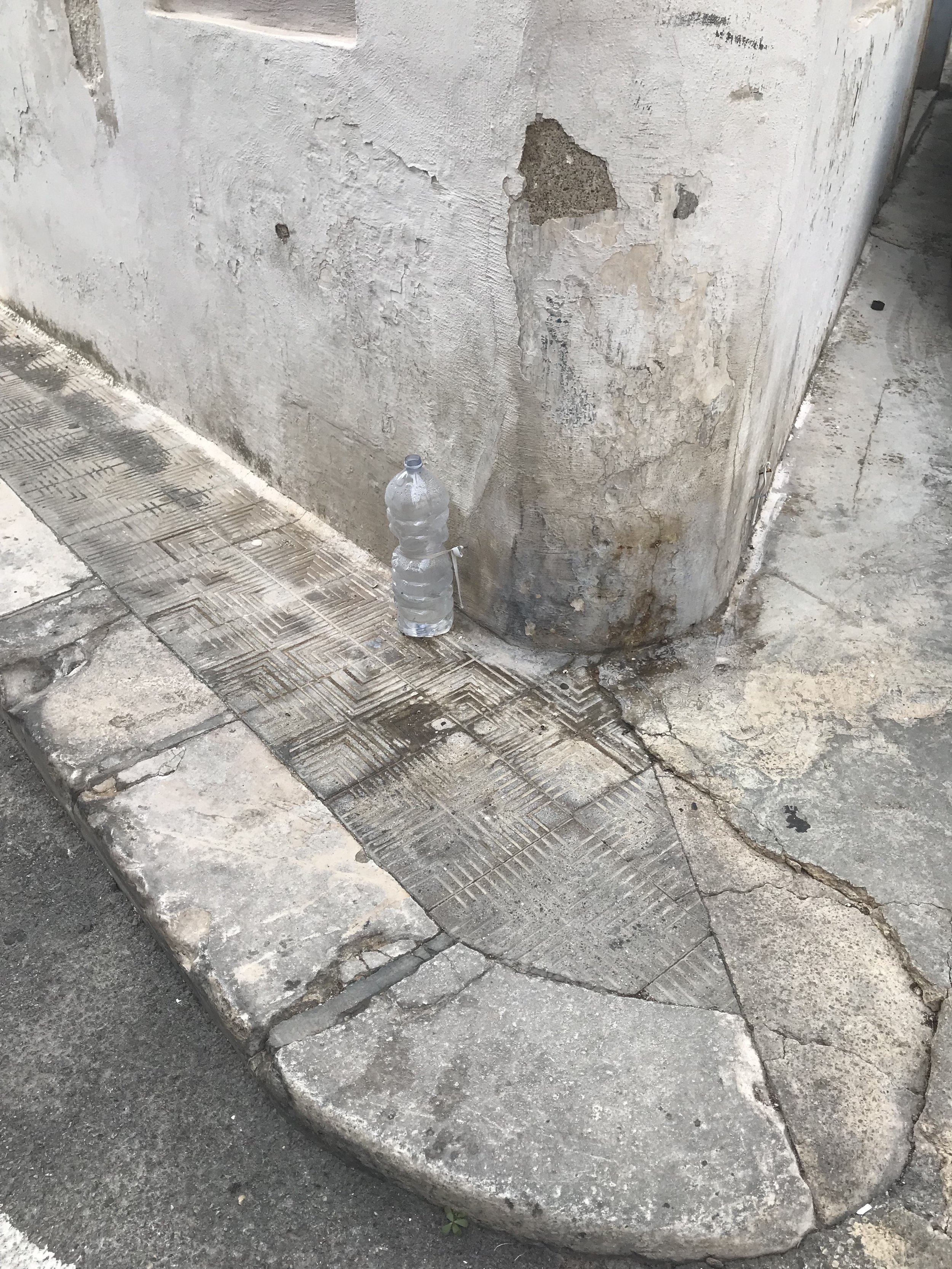Stone-Cold Strange - What are All these Bottles doing on the Pavement?
…or Il Mistero delle Chianche (The Basalt Paving Stones Mystery).
As I wandered around the little town of Oria, Italy, one night, in the chill of this year’s month of May, I began to notice a strange phenomenon. Plastic water bottles (1 litre, occasionally larger, never smaller), tethered in random spots on the chianche pavements.
Cianche (and cigarette stub)
Chianche is the local paving stone, polished by centuries of passing feet in the old towns, proudly invoked by estate agents whenever they show you around the humblest of properties. ‘Aah, look’, they say as the cracked yellow toilet pedestal grimaces in a dim corner and the wind whistles through the window frames, ‘these are real chianche floors’ . I spent all of 5 minutes trying to google out a little more about what makes chianche chianche, but it’s surprisingly hard to get to the nitty gritty. First of all there are reams of estate agents’ sites popping up chirpily, with their promise of the finest chianche floors in every home. Hot on their heels, the tiling centres and masons, with more genuine chianche, the perfect finishing touch for the new swimming pool, or an up-grade for that rare, sorry house without chianche flooring. My in-depth chianche analysis comes directly from one of the latter. Chianche is ‘Stone paving (basolato) of beige-light brown fine-grained calcareous stone with reddish veins. Thank you, Pietre di Puglia.
Those bottles, though - they’re the mystery. Initially I wondered if this was the work of a helpful water delivery person. Like a milkman, dropping off bottles of cooling water right there at your doorstep. It makes a kind of sense. If you’re a big family, an elderly nonno or nonna, have oodles of guests, or an f-u gas-guzzler car that is way too big to squeeze through the kinks and narrow streets of a medieval town.
Kissing Bottles, Massafra
But here’s the flaw in that theory: most of the bottles have lost their labels, and some have clearly seen better days. And they sit there, day after day, after day, without ever finding their rightful place in a refrigerator. New theory, more conspiratorial as is the fashion. The bottles are signifiers. Sometimes single bottles, sometimes in pairs. Upright, lying down, tied to a pipe, close into the wall, or sitting a metre away in isolated majesty. On the chianche paving, off the chianche paving. Is this a complicated code of some sort? A mafia language of safe houses and traitors’ homes? Of drug drops and protectionism?
I ask two Italians, one early twenties, the other our excellent guide to the chiese rupestre, the cave churches of Massafra. Both look puzzled, and profess to have absolutely no idea what we are talking about. Is this silent confirmation of theory 2?
The truth finally emerges and whilst it is strange in itself, there is nothing sinister or even commercial about it. Those bottles are not random, but strategically placed to prevent cats and dogs peeing and spraying over doorsteps, chianche and other pavements, or pots of flowers and greenery. This theory goes that at night, the reflections of animals eyes are refracted multiple times through the prisms of water and plastic, convincing the poor creatures that this spot is packed with other animals ready to leap into a protective fray. And at that they skulk off to do their business in a quieter corner.
Blue Bottles White Stairs
Bottles and Basil
Blue Crate Bottles
Does it work? Maybe. Maybe not. I sometimes sniff the air near a bottle corner, and then sniff again a few metres on. It’s not scientific proof, but I can’t detect any nasal variance. By all accounts, this is not just a local practice, but one that recurs right around the world. It’s just that here, in Puglia, it has found particular, often creative, favour.
Enjoyed this post? See more posts in Journal, or browse all blog posts.



